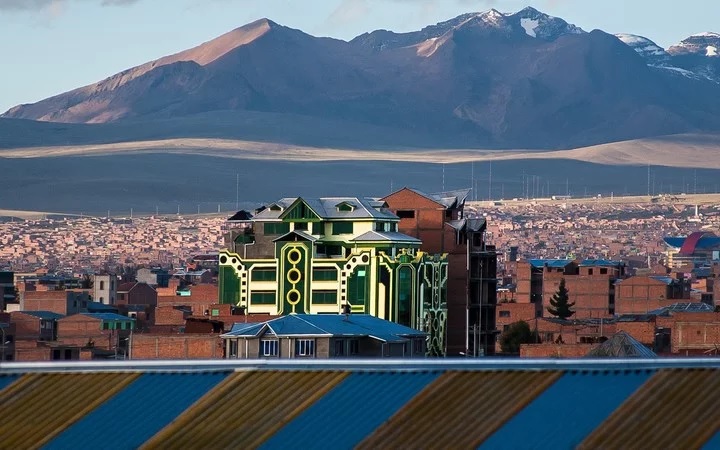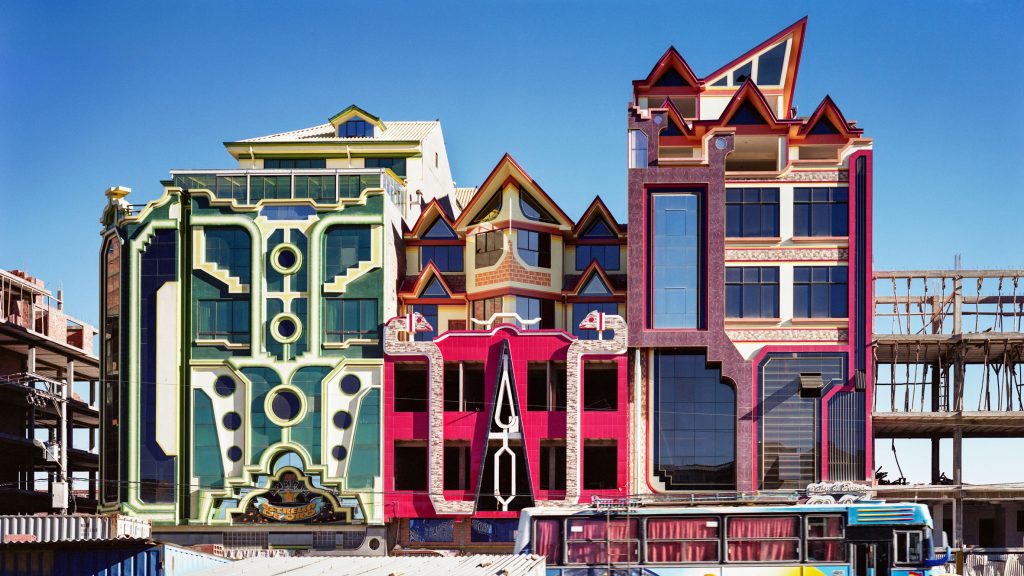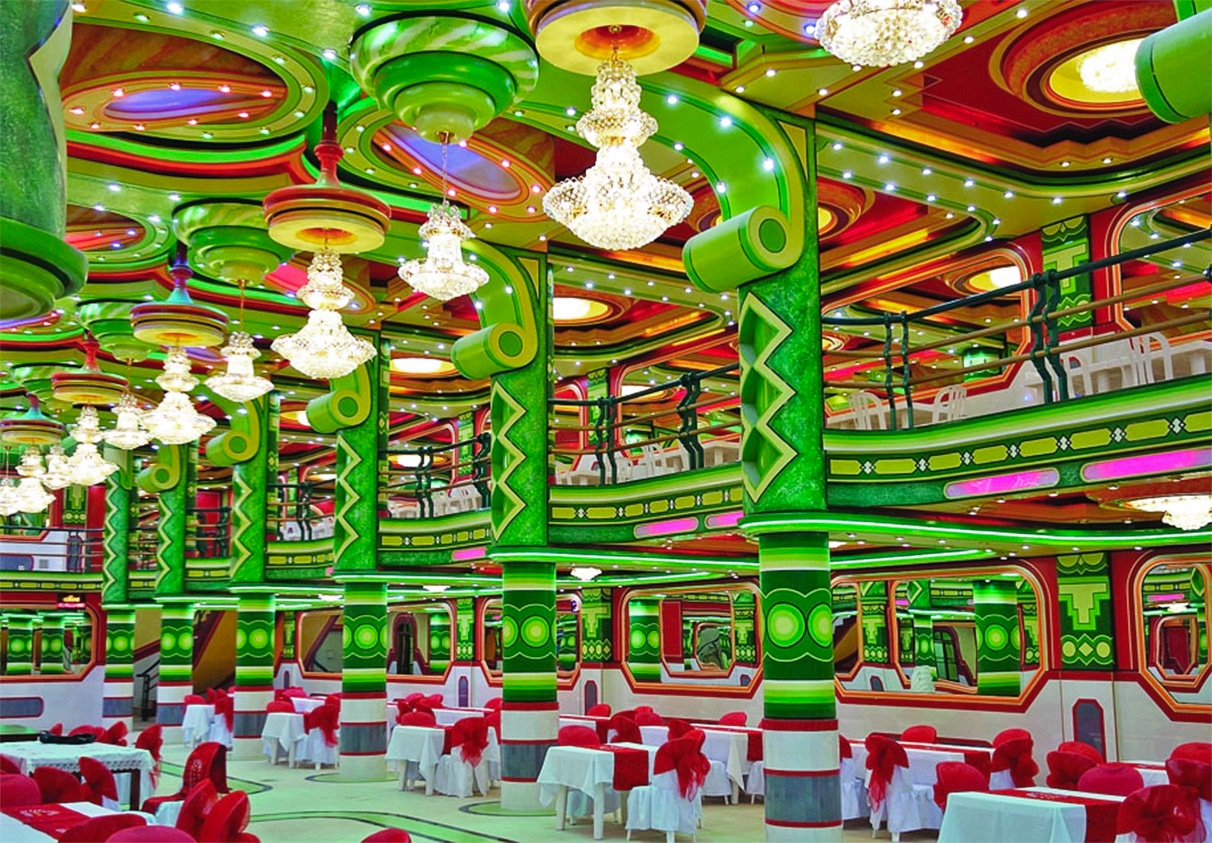RIO DE JANEIRO, BRAZIL – An engineer, builder and self-taught architect from El Alto, the world’s uppermost city in the metropolitan region of La Paz, Bolivia, is a veritable phenomenon in his country: Freddy Mamani, whom the Bolivian press calls “the architect of the people” and appeared on the ArchDaily list of leaders, projects and the most inspiring figures of architecture in 2015.

Called by some as representing a new “psychedelic baroque” style, Mamani suggests a new Bolivian architecture that rescues his Aimara culture with fabrics, ceramics and drawings and reinvents Andean architecture seeking inspiration in its roots and tradition, while sidelined by universities, of which he practices a very different and more genuine architecture, his work transcends borders where it gains international prominence.
Aiming for a new Bolivian contemporary style, Mamani seeks to fulfill the culture of one of the most deprived cities in Latin America rather than a reflection of the aesthetics of his elite, so that he may retrieve elements of his origin and make Aymara communities proud.

Mamani’s work transcends architecture and has great political, cultural and economic value that historically reflects a division of status, with EL Alto, a rapidly growing slum town overlooking the capital La Paz, where the wealthiest lived in the valley below.
Freddy Mamani is not an architect. Born in a small Aymara community called Catavi, he began working twenty years ago as a bricklayer’s assistant, but his dreams prompted him to study at the Technological College of Civil Construction at the University of San Andres (1986), and later to pursue a career in Civil Engineering at UBI . All of this while his family insisted that he give up, as he explained in a recent article: “don’t study in an expensive college, this is a career for the rich”.

Meanwhile, in the city of El Alto, which accepted thousands of indigenous peasants from La Paz, Oruro and Potosí for decades, a new Aymara bourgeoisie was formed, who found in Mamani’s craft one of his own: a man without academic convictions, but excited by the idea of finding an Aymara architectonic identity. “He seeks to give identity to my city by recovering elements of our original culture,” Freddy says in “Andean Architecture of Bolivia”.
In 2017 Freddy Mamani’s work was turned into the documentary ‘Cholet: The Work of Freddy Mamani’, watch the trailer here, which was released worldwide at the Rotterdam Architecture Film Festival.

